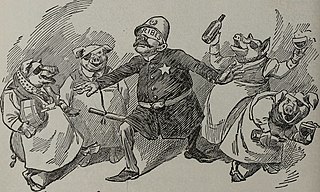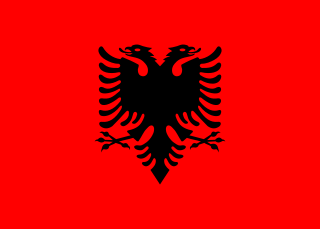Have you paid a bribe in 2013?
People in 107 countries have been surveyed whether they have paid a bribe to a public body during the last year; but for a small number of these countries, Albania, Azerbaijan, Brazil, Burundi, Fiji, France, Germany, Lebanon, Luxembourg, Malawi, Russia and Zambia, response data on particular questions has been excluded because of concerns about validity and reliability. The margin of error for each country is 3%. The typical sample size is 1,000 people. Four countries – Cyprus, Luxembourg, Vanuatu and Solomon Islands – have a sample size of 500 people and a margin of error of 4%.
Unlike the other similar Corruption Perception Index published by Transparency International, this is a survey directly asking the population instead of using "perceived expert opinions", which is liable to substantial bias and has been under criticism as such. In a 2013 article in Foreign Policy , Alex Cobham argued that the CPI embeds a powerful and misleading elite bias in popular perceptions of corruption, potentially contributing to a vicious cycle and at the same time incentivizing inappropriate policy responses. Cobham resumes: "the index corrupts perceptions to the extent that it's hard to see a justification for its continuing publication". [2]
Transparency International e.V. (TI) is a German registered association founded in 1993 by former employees of the World Bank. Based in Berlin, its nonprofit and non-governmental purpose is to take action to combat global corruption with civil societal anti-corruption measures and to prevent criminal activities arising from corruption. Its most notable publications include the Global Corruption Barometer and the Corruption Perceptions Index. Transparency International serves as an umbrella organization. From 1993 till today its members have grown from a few individuals to more than 100 national chapters which engage in fighting perceived corruption in their home countries. TI is a member of G20 Think Tanks, UNESCO Consultative Status, United Nations Global Compact, Sustainable Development Solutions Network and shares the goals of peace, justice, strong institutions and partnerships of the United Nations Sustainable Development Group (UNSDG). TI is a social partner of Global Alliance in Management Education. TI confirmed the dis-accreditation of the national chapter of United States of America in 2017.

Police corruption is a form of police misconduct in which law enforcement officers end up breaking their political contract and abuse their power for personal gain. This type of corruption may involve one or a group of officers. Internal police corruption is a challenge to public trust, cohesion of departmental policies, human rights and legal violations involving serious consequences. Police corruption can take many forms, such as bribery.

The Corruption Perceptions Index (CPI) is an index which ranks countries "by their perceived levels of public sector corruption, as determined by expert assessments and opinion surveys." The CPI generally defines corruption as an "abuse of entrusted power for private gain". The index is published annually by the non-governmental organisation Transparency International since 1995.
Bribe Payers Index (BPI) is a measure of how willing a nation's multinational corporations appear to engage in corrupt business practices. The first BPI was published by Transparency International on October 26, 1999 and the last one in 2011.

Corruption is widespread in Ukrainian society. In 2012 Ernst & Young put Ukraine among the three most-corrupt nations of the world - alongside Colombia and Brazil. In 2015 The Guardian called Ukraine "the most corrupt nation in Europe". According to a poll conducted by Ernst & Young in 2017, experts considered Ukraine to be the ninth-most corrupt nation in the world. According to the Transparency International's Corruption Perceptions Index, Ukraine ranked 117th out of 180 countries in 2020, ranking the second lowest in Europe, after Russia.

Corruption in Albania is a problem. According to Global Corruption Barometer 2013, 66% of respondents indicated that level of corruption has increased in Albania.

Corruption in Italy is a major problem. In Transparency International's annual surveys, Italy has consistently been regarded as one of the most corrupt countries in the Eurozone. Transparency International's 2019 Corruption Perception Index ranks the country in 51st place out of 180 countries, scoring on a par with Malta, Saudi Arabia, and Grenada. Political corruption remains a major problem particularly in Lombardy, Campania and Sicily where corruption perception is at a high level. Political parties are ranked the most corrupt institution in Italy, closely followed by public officials and Parliament, according to Transparency International's. But in the 2013 Global Corruption Barometer report, Italy is in 17° position in front of the United Kingdom (18°), Switzerland (21°) and the United States (22°).

Corruption in Turkey is an issue affecting the accession of Turkey to the European Union. Transparency International's 2016 Corruption Perception Index ranks the country 75th place out of 176 countries, while the 2017 index saw Turkey fall back to 87th place. Turkey ranked 78th of the 180 countries surveyed as part of the 2018 Transparency International Corruption Perceptions Index. This makes it comparable to Tunisia (73rd), Bulgaria (77th) and China (87th).

Corruption in Lithuania describes the prevention and occurrence of corruption in Lithuania.

Corruption in Denmark is amongst the lowest in the world. According to the 2018 Corruption Perceptions Index from Transparency International, Denmark ranks first place out of 180 countries and it has consistently been in the top-4 since the publication of the first report in 1995.

Corruption in Switzerland describes the prevention and occurrence of corruption in Switzerland.

Corruption in Luxembourg is examined on this page.

Corruption in Latvia is examined on this page.

In 2013, a report by Transparency International revealed that political parties, Parliament, the judiciary and the military are the most corrupt institutions in Portugal. Transparency International's 2017 Corruption Perception Index ranks the country 29th place out of 180 countries.

Transparency International’s Global Corruption Barometer 2013 reveals that political parties and businesses are the most corrupt institutions in Germany.

Corruption in the Czech Republic is considered to be widespread by a majority of the Czech public, according to Transparency International’s Global Corruption Barometer 2013.

Corruption in Slovenia is examined on this page.

Corruption in Slovakia is a serious and ongoing problem.

Corruption is pervasive at all levels of government in Iraq. In 2021, President Barham Salih said that $150 billion of oil money had been smuggled out of Iraq in corrupt deals since the 2003 invasion.

Bulgaria has "systematically demonstrated very high levels of perception of corruption." Government officials reportedly engage in embezzlement, influence trading, government procurement violations, and bribery with impunity.
This page is based on this
Wikipedia article Text is available under the
CC BY-SA 4.0 license; additional terms may apply.
Images, videos and audio are available under their respective licenses.

















